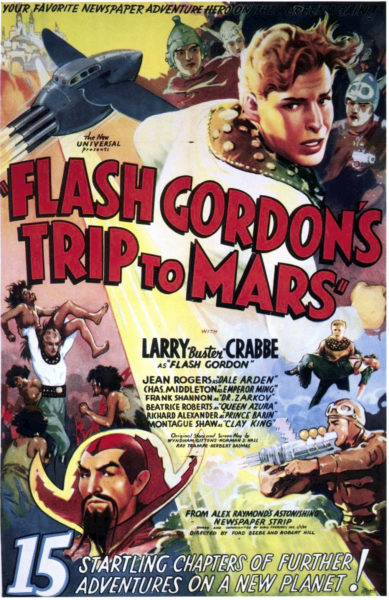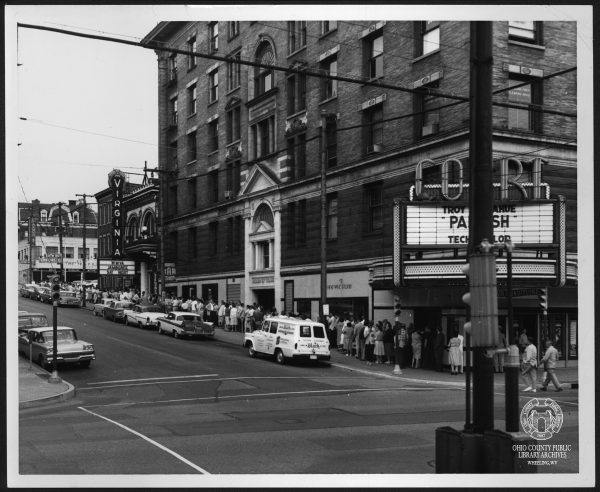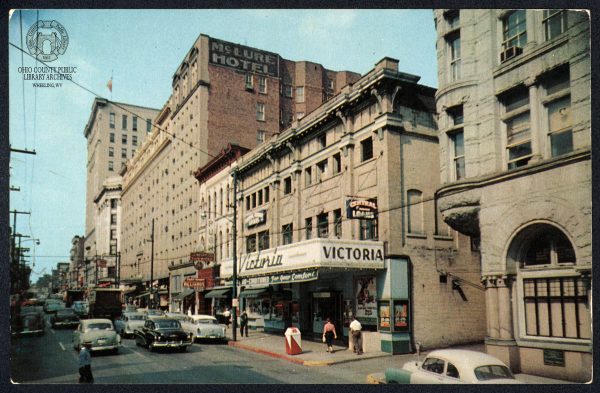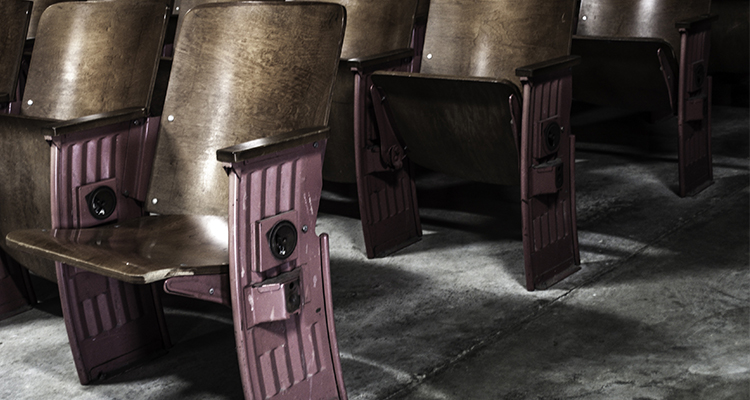 Saturday afternoon was the top choice for attending. That was when the “serials” were shown along with the feature film, Pathe or Movietone News and a cartoon. The serials were 12 weekly segments with about 15 minutes of action-packed episodes of Flash Gordon, Dick Tracy, The Lone Ranger and more. Each episode ended with the hero facing certain death, and then, the following week, he is miraculously delivered to continue his pursuit of the bad guys. There was plenty of discussion about whether he would die this time or live and if so, how?
Saturday afternoon was the top choice for attending. That was when the “serials” were shown along with the feature film, Pathe or Movietone News and a cartoon. The serials were 12 weekly segments with about 15 minutes of action-packed episodes of Flash Gordon, Dick Tracy, The Lone Ranger and more. Each episode ended with the hero facing certain death, and then, the following week, he is miraculously delivered to continue his pursuit of the bad guys. There was plenty of discussion about whether he would die this time or live and if so, how?
We walked to two theaters in our Woodsdale neighborhood. The Pike was on the corner of Bae Mar and National Road. A gas station, beer and sandwich store is there now. The theater was converted from a former auto dealership, I believe.
On the west front corner of the building was “Brinky’s,” who did candy, pop and sandwiches for the students of Saint Michael’s Grade School across the street. Saint Michaels Church now sits on a mud lot that was the playground. Brinky had punch boards with hundreds of punches sold at a nickel apiece. The grand prize was probably $10. It was a hangout. One of the whiz kids figured there were like $8 worth of chances or 160 punches left on the board. If we could get enough money we could buy all the punches and win the $10 and our profit would be $2!
I don’t remember how we got the unimaginable sum and stormed into Brinky’s to collect on our sure thing. We punched our way to the last and no grand prize! It was a scam! Brinky at first refused to pay but when we threatened to call the police, he paid. We all returned the money that was borrowed or “loaned.” I don’t remember what we did with all the money — the big thing was beating the system. The gloriousness of our victory is still remembered to this day.
The Mayfair was the last movie house built in Wheeling probably right before WWII or right after. It was an elegant medium- to small-size theater with a lovely outer lobby, ultra modern seats that adjusted automatically and large cloth murals on the side walls and carpeting with modern design. On either side of the entrance were two small storefronts — one was occupied by Hamburger Harry, the other by Butcher Bill the barber.
The planning involved how we were going to get the money for one 35-cent admission ticket. The most popular way was to ask (most of the time) for the empty bottles from the back porches on Locust , Laurel, Linden and Lenox avenues and then collect the 2-cent deposit from Driehorst and Massa’s grocery stores across from each other on National Road at Edgington Lane.
The one ticket was to get one of us inside the theater and then open the window in the men’s room so the rest could climb in with the help of an orange crate. It wasn’t long before steel strips were barring the access. It was then that the inside man would wait for the shows to start then go to the double fire door, hit both panic bars and fling the doors wide open as a mob of kids rushed inside to hide in the rows of seats as the ushers scrambled to grab as many as possible. Those caught were thrown out and barred from the theater for various periods of time. You can see why going to movies had to be well planned.
There was one fellow whom I truly respected. His father was the minister at Vance Memorial Presbyterian Church, and he did his best to live down that fact; to prove that he was in no way saintly. He had a really creative imagination, and he also had an old car. The car was a four-door sedan, a model A Ford, I believe.
One evening, the Mayfair was showing a film about the life of John Dillinger, the notorious outlaw of the 1930s who was shot down by the FBI as he exited a movie theater with “the Lady in Red.” Our friend drove his sedan by the Mayfair as the movie was letting out, and one of the boys in the car let go with two blank shots from a double-barreled 12-gauge shotgun. We were in the lane across from the theater. The “shots” were directed at a man walking along on that sidewalk in a long coat and a man’s hat, fedora style. He jerked and fell to the sidewalk “mortally wounded.” The car screeched to a stop as two men jumped out and dragged the “body” into the car as it raced away. That was an exciting evening and perfectly executed. We were never caught but spent the next few days in a state of high anxiety.
When I was a little older, we would hit the movies in town. The Capitol and the Court theaters were best in our opinion. At least if we were taking a girl on a date those were the two we thought would impress the girls.

The Capitol was built in the Grand Movie House style with a big outer lobby, spacious and beautifully appointed inner lobby, big chandeliers, box seats, glorious decor like a palace. In those days, there were ushers to help patrons find seats who would ask the male escorts, “How far do you want to go?” — meaning how close to the screen do you want to be seated. I doubled dated with Tommy Vogel one time, and he replied “All the way if we can.” I am still recovering from my embarrassment.
Outside, just to the north of the big shiny brass doors to the movie palace, was a doorway to a level below the street leading down a wide flight of stairs to a big mezzanine with a well-lighted and a shiny-clean pool hall complete with cues, break balls, cushions and cloth in perfect shape. On the full level under the pool tables was a bowling alley with the same excellent lighting, the latest in automatic pinsetters and the same pristine housekeeping. Many big-time tournaments were played there. I can still hear the sounds of crashing pins while playing pool.
The Court ’s ticket booth was on the corner of 12 and Chapline and was considered a first-rate movie theater, but nothing like the Capitol. The old entrance was on the south end of the building on Chapline. If one stands across the street, you can see that the “Court Theater” is carved in a stone arch above the original entrance. Immediately to the right is a window that was originally a door that opened to the stairway to “peanut heaven.” This was where the African Americans were seated in the top balcony, with no air conditioning. It had to be hot up there in the summer.
The Court got its name from the “Courtyard” that was situated between the Virginia and the original Court Theater, which I heard was a restaurant. It must be noted that the original Court Theater ran parallel to Chapline.
A story that circulated during WWII war years told of a train carrying German prisoners of war that had a layover in Wheeling. The German prisoners were marched up to the Court Theater to see a movie to kill time. Word of this was heard on upper Chapline Street, which was the black section of town, and a local Afro-American veteran with one leg, on crutches and in full uniform was refused entrance to the Court Theater, which was segregated at the time. I don’t know how to authenticate it, but it had wide currency at the time.
I think it should be noted than another one-time theater was the Victoria. When I returned from military service in 1957, Catfish Joseph was selling the tables and equipment from his billiards room, which he operated in the basement of the Vic. I remember seeing publicity photos, big glossy prints of stage stars of yesteryears in old dusty dilapidated dressing rooms. I bought a tournament size table (4 1/2 X 9 ) from him with everything to go with it — ivory cue balls, cues, racks, scorekeepers on long wires, balls and the Brunswick Contender oak table with three slates,100 pounds apiece, and leather web pockets, all set up in my home for $300.

There are a couple of big steel doors on the back alley side of the building that you can still see today where movie sets were moved in and out. Wheeling at that time was a try-out town for shows hoping to make it to New York. This made Wheeling a truly legitimate and very lively theater scene.
Movies were at the heart of our growing up experiences; when planning, getting in and later getting dates, was as entertaining as the shows themselves.


